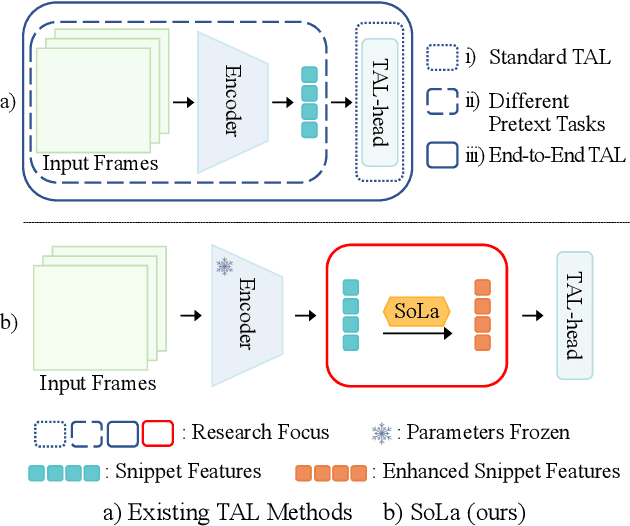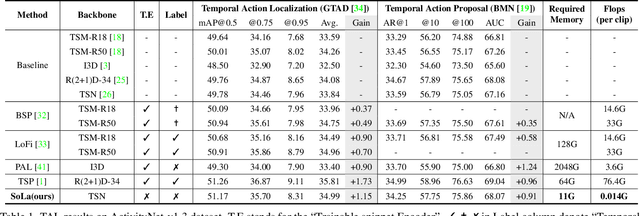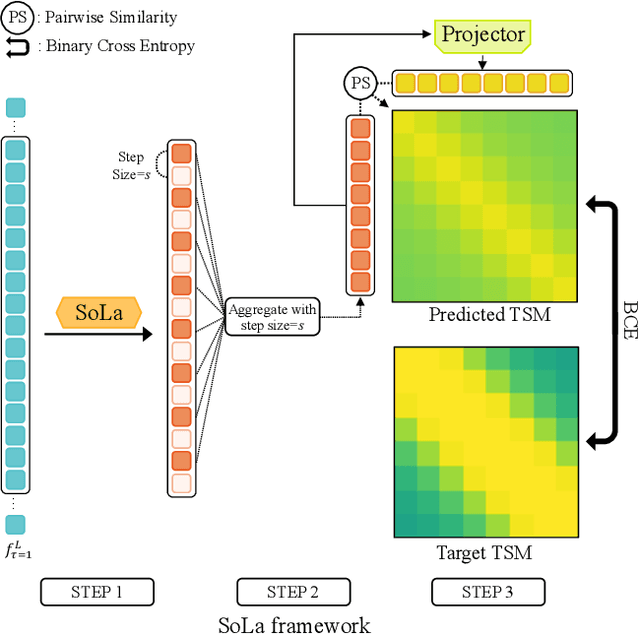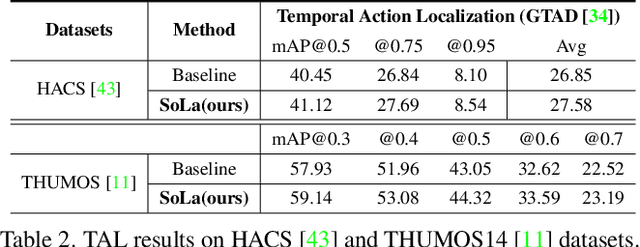Hanjung Kim
UniSkill: Imitating Human Videos via Cross-Embodiment Skill Representations
May 15, 2025Abstract:Mimicry is a fundamental learning mechanism in humans, enabling individuals to learn new tasks by observing and imitating experts. However, applying this ability to robots presents significant challenges due to the inherent differences between human and robot embodiments in both their visual appearance and physical capabilities. While previous methods bridge this gap using cross-embodiment datasets with shared scenes and tasks, collecting such aligned data between humans and robots at scale is not trivial. In this paper, we propose UniSkill, a novel framework that learns embodiment-agnostic skill representations from large-scale cross-embodiment video data without any labels, enabling skills extracted from human video prompts to effectively transfer to robot policies trained only on robot data. Our experiments in both simulation and real-world environments show that our cross-embodiment skills successfully guide robots in selecting appropriate actions, even with unseen video prompts. The project website can be found at: https://kimhanjung.github.io/UniSkill.
VISAGE: Video Instance Segmentation with Appearance-Guided Enhancement
Dec 08, 2023Abstract:In recent years, online Video Instance Segmentation (VIS) methods have shown remarkable advancement with their powerful query-based detectors. Utilizing the output queries of the detector at the frame level, these methods achieve high accuracy on challenging benchmarks. However, we observe the heavy reliance of these methods on the location information that leads to incorrect matching when positional cues are insufficient for resolving ambiguities. Addressing this issue, we present VISAGE that enhances instance association by explicitly leveraging appearance information. Our method involves a generation of queries that embed appearances from backbone feature maps, which in turn get used in our suggested simple tracker for robust associations. Finally, enabling accurate matching in complex scenarios by resolving the issue of over-reliance on location information, we achieve competitive performance on multiple VIS benchmarks. For instance, on YTVIS19 and YTVIS21, our method achieves 54.5 AP and 50.8 AP. Furthermore, to highlight appearance-awareness not fully addressed by existing benchmarks, we generate a synthetic dataset where our method outperforms others significantly by leveraging the appearance cue. Code will be made available at https://github.com/KimHanjung/VISAGE.
A Generalized Framework for Video Instance Segmentation
Nov 16, 2022



Abstract:Recently, handling long videos of complex and occluded sequences has emerged as a new challenge in the video instance segmentation (VIS) community. However, existing methods show limitations in addressing the challenge. We argue that the biggest bottleneck in current approaches is the discrepancy between the training and the inference. To effectively bridge the gap, we propose a \textbf{Gen}eralized framework for \textbf{VIS}, namely \textbf{GenVIS}, that achieves the state-of-the-art performance on challenging benchmarks without designing complicated architectures or extra post-processing. The key contribution of GenVIS is the learning strategy. Specifically, we propose a query-based training pipeline for sequential learning, using a novel target label assignment strategy. To further fill the remaining gaps, we introduce a memory that effectively acquires information from previous states. Thanks to the new perspective, which focuses on building relationships between separate frames or clips, GenVIS can be flexibly executed in both online and semi-online manner. We evaluate our methods on popular VIS benchmarks, YouTube-VIS 2019/2021/2022 and Occluded VIS (OVIS), achieving state-of-the-art results. Notably, we greatly outperform the state-of-the-art on the long VIS benchmark (OVIS), improving 5.6 AP with ResNet-50 backbone. Code will be available at https://github.com/miranheo/GenVIS.
Soft-Landing Strategy for Alleviating the Task Discrepancy Problem in Temporal Action Localization Tasks
Nov 11, 2022



Abstract:Temporal Action Localization (TAL) methods typically operate on top of feature sequences from a frozen snippet encoder that is pretrained with the Trimmed Action Classification (TAC) tasks, resulting in a task discrepancy problem. While existing TAL methods mitigate this issue either by retraining the encoder with a pretext task or by end-to-end fine-tuning, they commonly require an overload of high memory and computation. In this work, we introduce Soft-Landing (SoLa) strategy, an efficient yet effective framework to bridge the transferability gap between the pretrained encoder and the downstream tasks by incorporating a light-weight neural network, i.e., a SoLa module, on top of the frozen encoder. We also propose an unsupervised training scheme for the SoLa module; it learns with inter-frame Similarity Matching that uses the frame interval as its supervisory signal, eliminating the need for temporal annotations. Experimental evaluation on various benchmarks for downstream TAL tasks shows that our method effectively alleviates the task discrepancy problem with remarkable computational efficiency.
 Add to Chrome
Add to Chrome Add to Firefox
Add to Firefox Add to Edge
Add to Edge